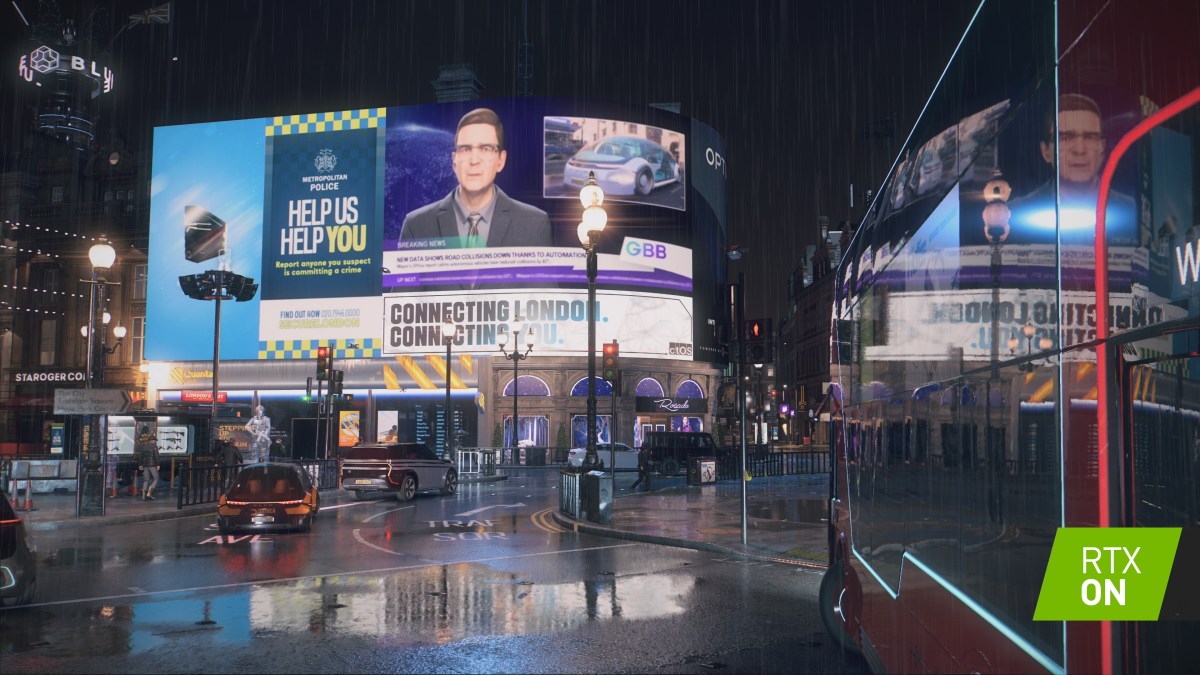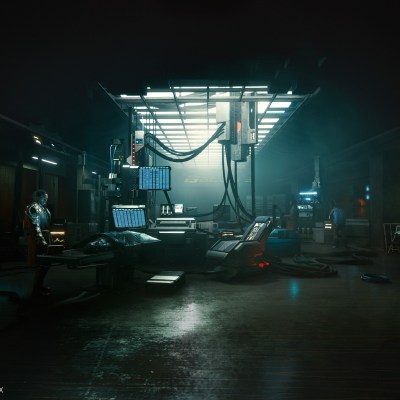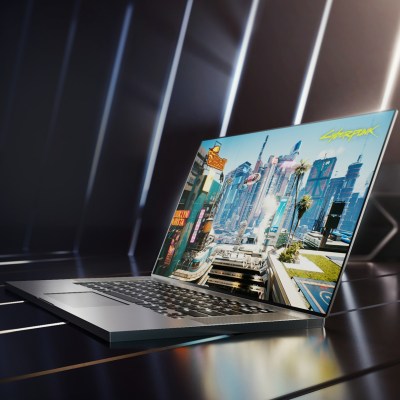Watch Dogs: Legion Shines on an NVIDIA GeForce RTX 3080 Laptop
With ray tracing enabled in 2K, it’s just like returning to the big city in Watch Dogs: Legion.

This article is presented by NVIDIA.
Thanks to the current state of the world, I haven’t been to central London in over a year despite living just eight miles from Big Ben. Returning to a virtual version of the UK capital via Watch Dogs: Legion, it’s pretty clear things aren’t quite how I remember them. True, that’s partially because real-life London isn’t a surveillance state run by a private military company, but also because I don’t remember the city being so damned pretty.
That, of course, is less down to the bang-up job the private militia has done with the place, and more thanks to the hardware I’m playing the game on. Using one of the latest NVIDIA laptop GPUs, the GeForce RTX 3080, I didn’t have to choose between a nice, smooth frame rate and stunning ray tracing effects. I can have both, and get back to enjoying the London I’ve missed without off-putting frame rate dips or other immersion breakers.
Smooth and Sharp
Watch Dogs: Legion is a demanding game, especially with all the graphical settings maxed out. The MSI GS66 Stealth loaned to me for the purpose of this test blows it out of the water. It’s thoroughly impressive that MSI has managed to stuff an NVIDIA GeForce RTX 3080 GPU, Intel i7 processor, 16GB RAM, and a 240Hz 1440p screen into such a compact package. A package that, I might add, is impressively thin and light.
So how well does Watch Dogs: Legion work on the GeForce RTX 3080 Laptop GPU? Well helpfully, Watch Dogs: Legion has an in-game benchmarking tool of a beautifully lit firefight at Camden market so you can easily test how well your chosen graphical settings will hold up under heavy strain.
Suffice it to say that the laptop copes brilliantly. At 2K resolution with ultra graphics and ray tracing set to ultra, the GS66 Stealth managed an average of 60fps, which is the frame rate that most serious gamers demand.
Much of the credit here belongs to a clever technology called DLSS – or Deep Learning Super Sampling. Here, NVIDIA uses the RTX 30 Series’ Tensor Core AI processors to intelligently upscale the scene to your chosen resolution, essentially giving you the performance of a lower resolution output with the graphical fidelity of a higher pixel-dense image. If you turn DLSS off, the same benchmark drops to 33fps and to my eyes there’s no real difference in picture quality – it really is amazing.
Read More About NVIDIA GeForce RTX 30 Series Laptops Here
The Ray Tracing Revolution
Of course, you can get a higher frame rate if you drop the quality of ray tracing or disable it completely, but to do so would be to miss out on a truly incredible leap forward in gaming graphics. With ray tracing enabled, each beam of light is accurately modeled in real time leading to never-before seen realism. As you can see from the game trailer below, in Watch Dogs: Legion, this means that cars reflect street lights as they drive by, as they would in real life, and you can see the inversion of every shop sign in every one of rainy old London’s many puddles.
While it’s mostly – at this stage – there for eye candy, the potential is there for ray tracing to offer genuine advantages for gameplay, and the early signs of this were here in my playtime with Watch Dogs: Legion. Spying enemies around corners via their reflections can give you an upper hand in the game, where staying in the shadows and avoiding violence is encouraged. In Watch Dogs, it’s far easier to distract someone via a hacked phone notification than to get involved in a protracted gun battle, after all.
Of course, not being the stealthiest gamer in the world, things do frequently break down into gun battles for me, and it’s here where the pure grunt of the GeForce RTX 3080 comes into its own. That solid 60fps frame rate – or higher if you drop the resolution or some detail – is essential as your reflexes are tested to the max. It’s no good if your game becomes a slideshow while in a high-speed police chase over London Bridge, or pinned down by gunfire at Trafalgar Square. Whether you’re fighting for your life or casually zipping a drone across the London skyline, the RTX 3080 doesn’t let you down.
Part of this is down to the sheer power of the card, but NVIDIA has worked wonders in making a laptop GPU run this impressively. There are plenty of tricks that help you get the most out of the hardware which you can read about here, but there’s one thing that deserves special attention for portable gamers: Dynamic Boost 2.0. This is a neat feature where the AI software automatically detects whether the CPU or GPU is in more demand and pushes power to and from the part of your laptop that needs it most. Obviously, that’s unnecessary in desktop PCs which can just throw power at both simultaneously, but the fixed power and thermal design of a laptop GPU calls for such clever initiatives to ensure performance is optimized.
Like all of NVIDIA’s clever design tricks, this is happening invisibly behind the scenes without bugging the user. For me, it ensures my virtual return to London is both jaw droppingly beautiful and with silky smooth frame rates. While the map is scaled down for obvious reasons, it’s impressive that I can still find my way back to the approximate location of the Vauxhall flat I vacated a decade ago. And with the added realism of the GeForce RTX 3080, it really would feel like old times…if it weren’t for all those drones menacingly floating around.
Learn more about NVIDIA’s GeForce RTX 30 Series laptops here.


